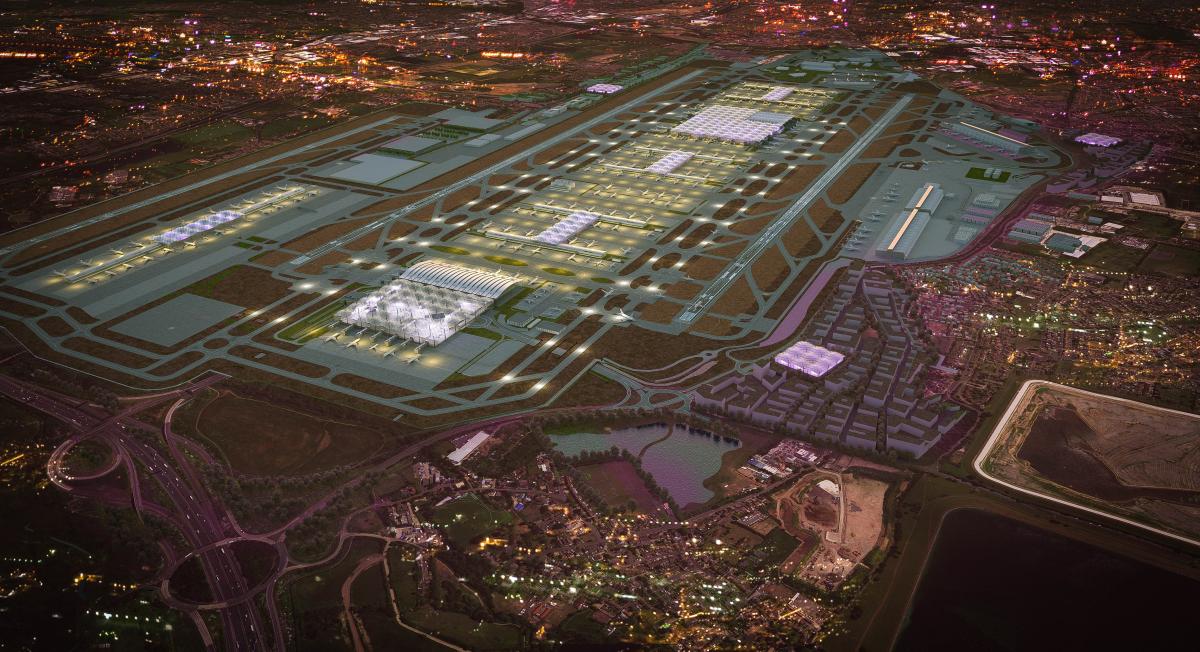Planning permission for the controversial third runway depends on Heathrow not increasing its CO2 footprint post 2025, but the airport has not mapped out how it will achieve this, says Terry Slavin
Heathrow this month launched an ambitious new sustainability strategy, promising that its planned third runway will bring carbon-neutral growth, and set new sustainability standards for the industry. Heathrow’s CEO John Holland-Kaye described the Heathrow 2.0 strategy as a “landmark in our company’s history, [setting] a bold direction towards a future of sustainable aviation”.
When it approved the controversial third runway last October, the government said planning permission would be dependent on Heathrow showing the runway won’t worsen existing air quality or increase the airport’s CO2 emissions. Critics of the third runway argue that it could dash hopes of meeting the UK’s climate change targets because of the difficulty of curbing CO2 emissions from aircraft.
The document itself is short on specifics, beyond £500,000 in start-up funding for an R&D incubator that the airport says will become a centre of excellence when it opens in 2019, coming up with innovations for the entire industry on tackling aviation noise and CO2 emissions. And though the planned expansion is due to open in 2025, there is no target to cut CO2 beyond 2020, when the airport targets a 34% cut in CO2 emissions compared to 1990.
The headline-grabbing announcement was that Heathrow will use 100% renewable energy from this year, joining the RE100 alliance of companies. However this glosses over the fact that less than 1% of the electricity Heathrow uses (2.5MWh) is produced renewably on site, from solar PV and a biomass combined heat and power plant in Terminal 2, and there is no target to increase onsite renewables.
More progress has been made towards establishing an ultra low emission zone at and around the airport by 2025, including a commitment that 100% of Heathrow’s ground vehicles will be electric or plug-in hybrid by 2020, and work on driving down freight emissions, including the development of a hydrogen fuelling infrastructure. The plan sets a target of reducing NOx emissions from airport-related traffic by at least 40% by 2020 and 60% by 2025, using a 2013 baseline.
Briefing a small number of journalists, Emma Gilthorpe, the airport’s executive director of expansion, and Matt Gorman, the airport’s sustainability and environment director, admitted that, until relatively recently, Heathrow’s focus has been on cutting its noise and air quality impacts rather than its carbon footprint.

“About a year ago we decided to move away from a three-year planning horizon on sustainability” and take a more holistic, long term approach, she said. Heathrow started by seeking the advice of sustainability leaders Kingfisher, Unilever and Marks and Spencer, “We were advised to be bold. You may not always be clear of the detail but you can have a bold ambition,” Gilthorpe said. “It’s amazing how you can mobilise an organisation by having a clear, long-term vision.”
Most of the Heathrow’s ideas to cut its carbon footprint are embryonic, including the recommendation by Tony Juniper, the former Friends of the Earth executive director, that Heathrow should offset increased CO2 emissions from the new runway by restoring degraded peatlands in the UK – something another controversial client, forestry giant Asia Pulp & Paper, has been doing to reduce the impact of its operations in Indonesia.
“We’re not fixed on that,” Gilthorpe said, “but the idea received the most traction around our leadership table. There are wider environmental benefits for it too, such as creating new wildlife habitats.”
Asked at the briefing whether it was doing enough given the scale of the challenge, Gorman said: “I challenge you to find any other airport with a plan that is as broad as this, as deep as this, and as long-term as this … that is beginning to talk in terms of carbon neutral growth.”
This article is part of our sustainable transport briefing. See also:
Delivering the Paris Agreement
DPDHL goes electric to power zero carbon drive
Boxing clever to cut emissions
Search for sustainable biofuels beset by turbulence
KLM asks customers to fill biofuels funding gap
Heathrow airport sustainability emissions third runway
